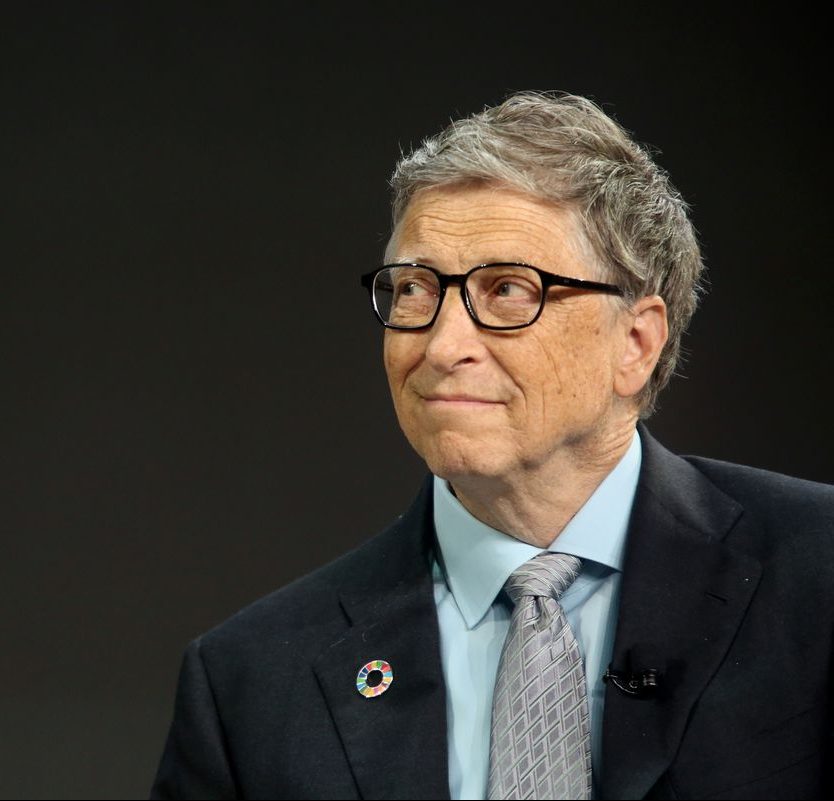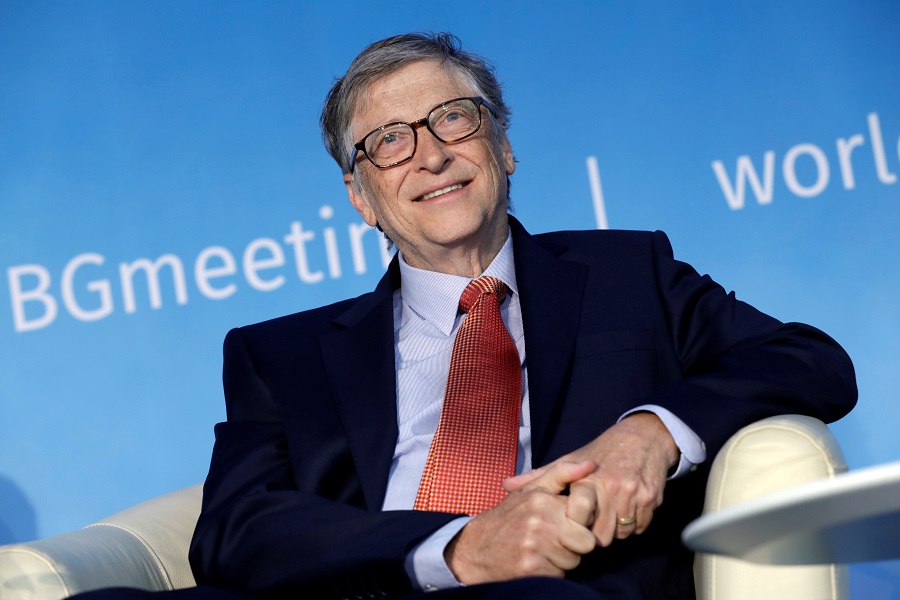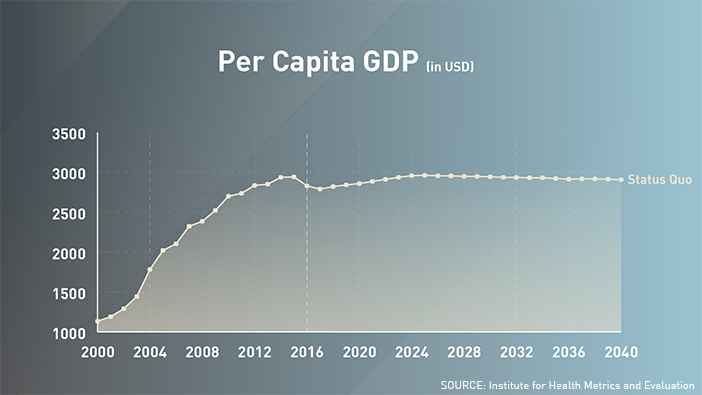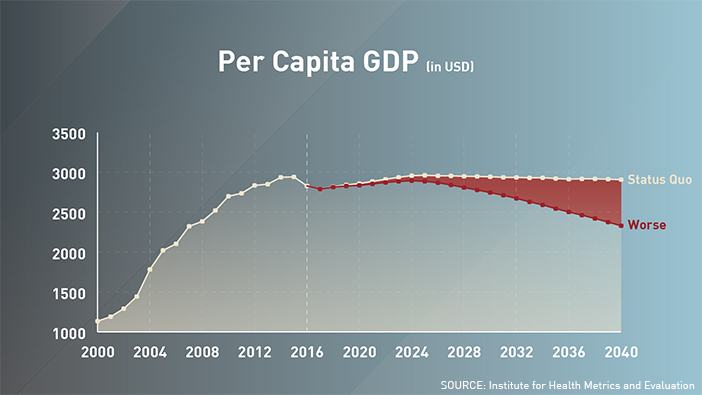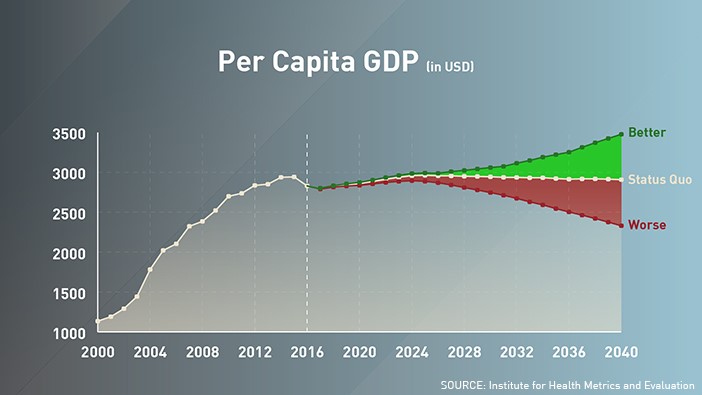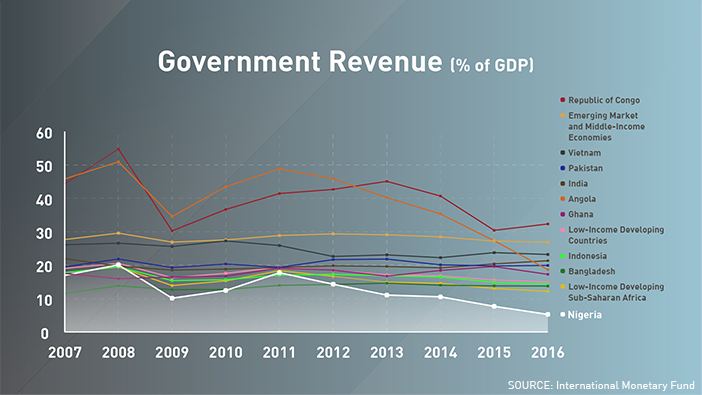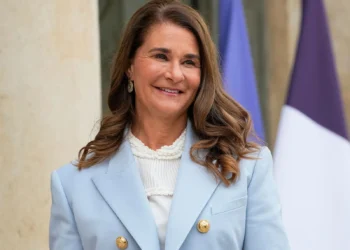Co-founder, Bill and Melinda Gates Foundation, Bill Gates was in Abuja yesterday where he had a meeting with the Federal Executive Council.
Speaking at the meeting, Gates advised the Nigerian Government to focus more on three major areas for the country to achieve its potential.
The areas include Health, Education and creating opportunity through Agriculture these areas he said if well-funded and managed will improve the country’s per capita GDP. In fact, the focus of his speech was on Per Capita GDP and did so we 4 compelling charts.
Let’s explain each of them but first GDP Per Capita
GDP Per Capita is simply the total GDP of a country divided by the population of that country. It is often used to compare one country to the other and used to determine which citizens of a country are faring better.
So for example, if GDP Per capita is Nigeria is $2,000 and it is $10,000 in Saudi Arabia it means a citizen in Saudi fares better than one in Nigeria. So back to Bill Gates.
Chart 1
In this chart, he has looked at the GDP Per Capita of Nigeria between 2000 and 2016 suggesting that Nigerians have on an average earned more over the years. Here is what he had to say;
“I’m blown away by how much Nigeria has changed in the past decade. Consider the technology sector. That energy I talked about during the early days of Microsoft, our passion and our eagerness to take risks…. That’s the same energy that powers technology hubs across Nigeria like Co-Creation and Enspire. The novelist Chimamanda Adichie, who my wife especially admires, captured the country’s spirit when she said her fellow Nigerians have “big dreams and big ambitions.” This line graph of Nigeria’s per capita GDP shows where those dreams and ambitions can lead. With the exception of the recent recession, the slope goes straight up. As a result of this growth, Nigeria is now the biggest economy on the continent. You are rapidly approaching upper middle-income status, like Brazil, China, and Mexico.” BG
What is he saying? He is suggesting that Nigeria is moving into middle-income status by virtue of what the chart reveals. I am not sure many will agree with him on this.
In the next three charts, he models Nigeria’s economic growth based on three scenarios
“In preparation for my visit, I asked a research institute at the University of Washington to model Nigeria’s economic growth under three scenarios related to health and education, the core of how economists define human capital.” BG
Let’s focus on them;
Chart 2
In this chart, Bill Gates peeked into the future predicting what might happen if we do not match growth in GDP with population growth.
“Here you can see Nigeria’s per capita GDP growth from 2000 until today. If current education and health trends continue—if you spend the same amount in these areas and get the same results—per capita GDP flatlines, with economic growth just barely keeping up with population growth.” BG
What does this mean? Well, in simple terms, if we keep growing our population faster than we are growing the economy, then the best we can get is a flat GDP Per capita. Meaning that you can work harder but earn the same amount of money over a long period of time.
Chart 3 – And it could get worse
“If things get worse, it will decline. Unfortunately, this scenario is a very real possibility unless you intervene at both the federal and state levels. Because even in the worst-case scenario, your national income level is about to make you ineligible for certain kinds of development assistance and loans that you’ve been relying on to fund your health system and other priorities. Without more and better spent domestic money, investment in your people will decline by default as donor money shrinks—a lose-lose scenario for everyone.” BG
Interpretation: Unfortunately, things have actually gotten worse since we fell into a recession. Nigeria’s GDP Per Capita has fallen over the last two years both in Naira and dollar terms.
Chart 4 – Or get better
“However, if you commit to getting better results in health and education—if you spend more and more effectively—per capita GDP will stay on its remarkable pre-recession trajectory” BG
Interpretation: According to him, if we spend more on Health and Education, Nigeria’s GDP Per Capita could actually be on the rise. Unfortunately, this is not particularly the case as Nigeria has spent less on Education and Health as a percentage of GDP compared to other sectors such as defence, power or even roads.
And there is one more chart
“Nigeria’s government revenue as a percentage of its GDP is by far the lowest in the world, at 6 percent. That makes investing in your people difficult. The next lowest country, Bangladesh, collects 10 percent of its GDP. If you got yourself up to second-to-last in the world, you would have an extra $18 billion to budget. Obviously, you’re aiming higher than that, but it gives you some idea about the scale we’re talking about.”
I think we should let you chew on that

